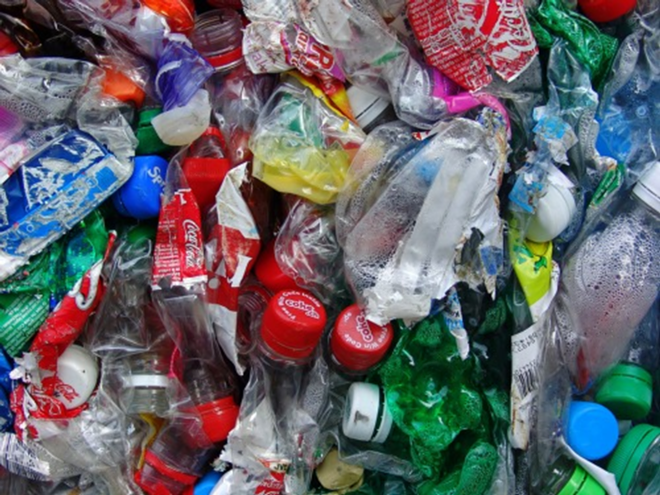Overall, PET carpet—which is indeed made from recycled soda and water bottles and is sold under the name brands Resistron and Permalon, among others—is a pretty green choice. Buildings in several national parks have used PET carpet in lobbies and other high-traffic areas with minimal need for maintenance and excellent results. PET fibers are naturally stain resistant and do not require the chemical treatments used on most nylon carpets, and they retain color and resist fading from exposure to the sun or harsh cleaning. PET carpet advocates report that because plastic beverage containers are made with top quality resins as required by the U.S. Food & Drug Administration, recycled PET is superior to lower grades of virgin synthetic fibers used in making other brands of polyester carpet yarns.
Also, old PET carpet can live another day when it is “down-cycled” for use in other applications such as car parts, insulation, and even furniture stuffing. PET carpet advocates brag that their products keep plastic soda and water bottles out of the landfill, but who knows how many of those sacrificed bottles could have lived on as more bottles instead of other end of the line products.
GreenAmerica, publisher of the popular yearly-published National Green Pages, recommends the 100 percent post-consumer recycled PET carpets for sale on Liberty Carpet One’s GreenFloors.com website. Liberty Carpet One claims that every square yard of PET carpeting they sell keeps 40 water or soda bottles out of landfills. The company also reports that its dyeing method is less polluting and requires less energy to produce than other flooring options, and that all of their carpets have been tested and meet indoor air quality standards set by the U.S. Environmental Protection Agency.
Of course, if you’re starting from scratch, good old natural fibers such as wool, sisal, jute and seagrass may be the greenest and healthiest carpet choices out there, especially when paired with pads made from cotton or rag (not petroleum). Other than GreenFloors PET carpeting, GreenAmerica also vouches for natural fiber offerings from the likes of Contempo Floor Coverings and Natural Home. And besides carpeting, there is a whole world of harder flooring choices that meet environmentalists’ strict criteria, from sustainably harvested hard woods to bamboo to cork.
EarthTalk® is written and edited by Roddy Scheer and Doug Moss and is a registered trademark of E — The Environmental Magazine (www.emagazine.com). Send questions to: [email protected]. Subscribe: www.emagazine.com/subscribe; Free Trial Issue: www.emagazine.com/trial.



















